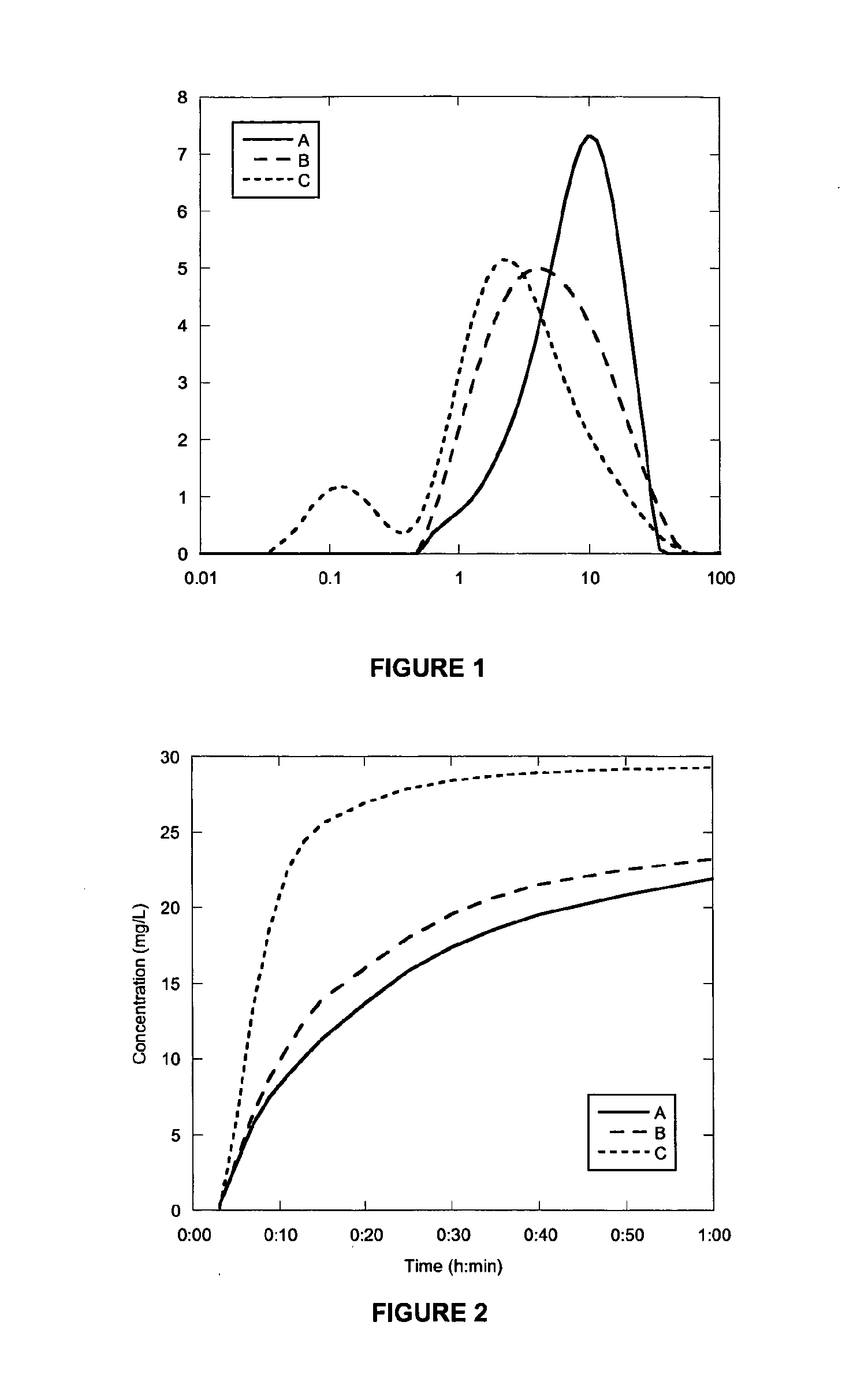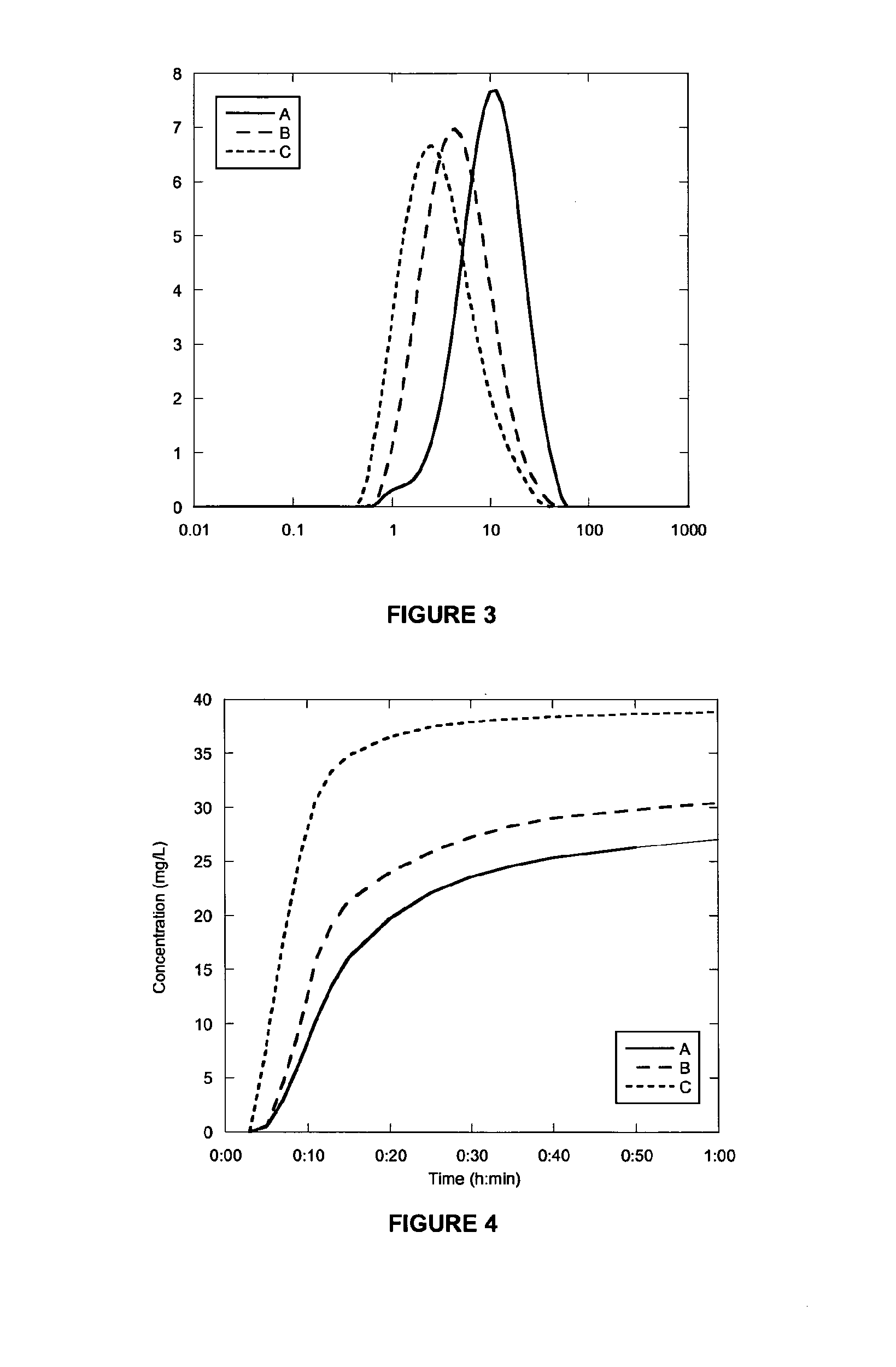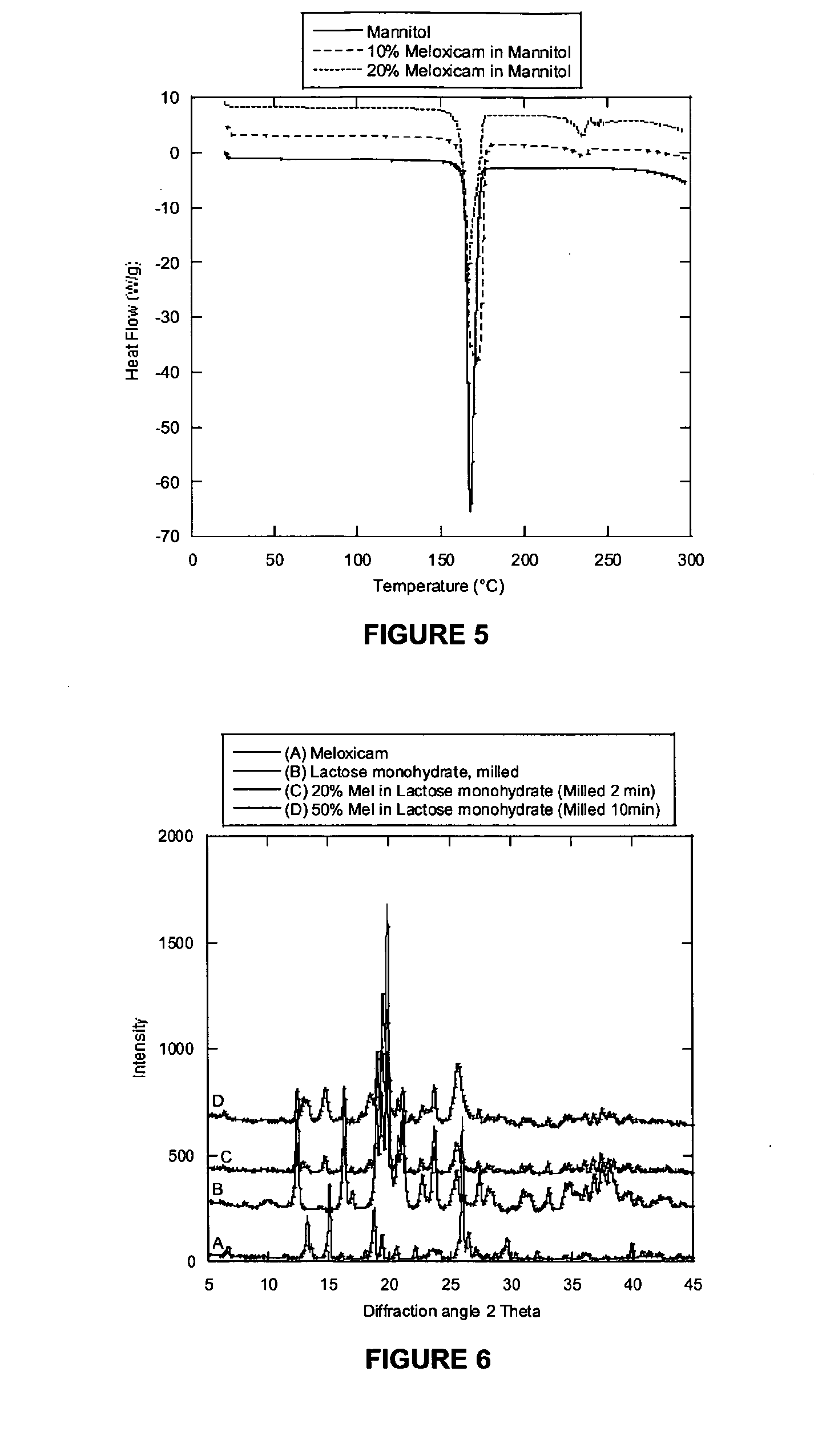Method for improving the dissolution profile of a biologically active material
- Summary
- Abstract
- Description
- Claims
- Application Information
AI Technical Summary
Benefits of technology
Problems solved by technology
Method used
Image
Examples
example 1
10% Meloxicam in Lactose Mono-Hydrate
[0232]A mixture of Meloxicam (0.60 g) and Lactose monohydrate (5.40 g) was milled for either 1 (B) or 2 (C) minutes. PSDs of the milled products and unmilled material (A) are shown in FIG. 1. The dissolution behaviour is shown in FIG. 2. Results are summarised in Table 1 together with results obtained for an un-milled control (A), prepared by physically mixing Meloxicam (0.40 g) and Lactose monohydrate (3.60 g) in a vial until the appearance was homogenous.
[0233]FIG. 1 shows that after 1 minute of milling the particle size is reduced by about half. After another minute of milling the particle size has further reduced but is still mostly in the range of 1-10 micron. In contrast to this the dissolution of the material milled for 1 minute is only slightly faster than the unmilled control sample. The dissolution at 2 minutes is dramatically improved over both the 1 minute and unmilled material. In Table 1 the median size and quantitative assessment o...
example 2
10% Diclofenac in Lactose Mono-Hydrate
[0235]A mixture of Diclofenac (0.60 g) and lactose monohydrate (5.40 g) was milled for either 1 (B) or 2 (C) minutes. PSDs of the milled products and unmilled material (A) are shown in FIG. 3. The dissolution behaviour is shown in FIG. 4. Results are summarised in Table 2 together with results obtained for an un-milled control (A), prepared by physically mixing Diclofenac (0.40 g) and Lactose monohydrate (3.60 g) in a vial until the appearance was homogenous.
[0236]The data for Diclofenac milled in lactose monohydrate is very similar to the data in Example 1. FIG. 3 shows that after 1 minute of milling the particle size is reduced by just over 50%. After another minute of milling the particle size has reduced a little more giving two milled materials in the range 2-4 micron. Again in contrast to this the dissolution of the material milled for 1 minute is only slightly faster than the unmilled control sample. The dissolution at 2 minutes is dramat...
example 3
10% Meloxicam in Mannitol
[0238]A mixture of Meloxicam (0.60 g) and Mannitol (5.40 g) was milled for either 1 (B) or 2 (C) minutes. PSDs of the milled products and unmilled material (A) were measured as well as the dissolution behaviour. Results are summarised in Table 3. The un-milled control (A) was prepared by physically mixing Meloxicam (0.40 g) and Mannitol (3.60 g) in a vial until the appearance was homogenous.
[0239]The PSD shows that the material milled for 1 and 2 minutes has a reduced size compared with the unmilled material, but the size reduction is not dramatic. According to the dissolution measures X and Y both materials have a much improved dissolution rate compared with the unmilled sample. This data also shows that once enough milling energy has been input to deliver the improved dissolution (1 minute milling), further size reduction (2 minutes) has little impact on the dissolution rate.
[0240]In FIG. 5 a DSC trace of material milled for 2 minutes is shown compared wit...
PUM
| Property | Measurement | Unit |
|---|---|---|
| Molar density | aaaaa | aaaaa |
| Size | aaaaa | aaaaa |
| Time | aaaaa | aaaaa |
Abstract
Description
Claims
Application Information
 Login to View More
Login to View More - R&D
- Intellectual Property
- Life Sciences
- Materials
- Tech Scout
- Unparalleled Data Quality
- Higher Quality Content
- 60% Fewer Hallucinations
Browse by: Latest US Patents, China's latest patents, Technical Efficacy Thesaurus, Application Domain, Technology Topic, Popular Technical Reports.
© 2025 PatSnap. All rights reserved.Legal|Privacy policy|Modern Slavery Act Transparency Statement|Sitemap|About US| Contact US: help@patsnap.com



